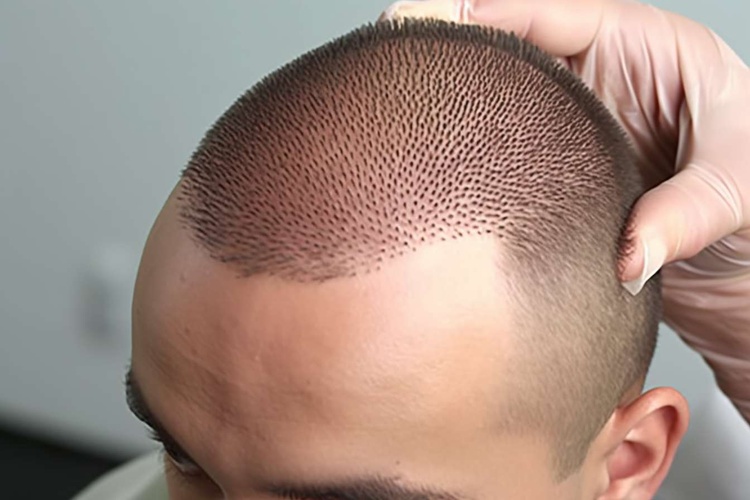Hair Transplantation: A Modern Solution to Hair Loss
Hair loss can be a distressing experience for many individuals, affecting self-esteem and confidence. Fortunately, advancements in medical technology have made hair transplantation an effective and increasingly popular solution for those seeking to restore their hairline and combat baldness. This article delves into the world of hair transplantation, exploring its various aspects and providing valuable insights for those considering this transformative procedure.

The two main techniques used in hair transplantation are Follicular Unit Transplantation (FUT) and Follicular Unit Extraction (FUE). FUT involves removing a strip of skin with hair follicles from the donor area and dissecting it into individual grafts for transplantation. FUE, on the other hand, extracts individual follicular units directly from the donor area using a specialized punch tool. Both methods aim to create natural-looking results by carefully placing the grafts in the recipient area to mimic the patient’s natural hair growth pattern.
Who is a suitable candidate for hair transplantation?
While hair transplantation can be an excellent solution for many individuals experiencing hair loss, not everyone is an ideal candidate for the procedure. Suitable candidates typically include:
-
Men and women with pattern baldness or androgenetic alopecia
-
Individuals with stable hair loss that is not rapidly progressing
-
Those with sufficient donor hair to cover the balding areas
-
Patients with realistic expectations about the outcome of the procedure
-
Individuals in good overall health without conditions that may impair healing
It’s important to note that hair transplantation may not be suitable for those with diffuse hair loss, autoimmune disorders affecting hair growth, or severe scarring of the scalp. A consultation with a qualified hair restoration specialist is crucial to determine if you are a good candidate for the procedure.
What are the different types of hair transplantation techniques?
As mentioned earlier, the two primary techniques used in hair transplantation are FUT and FUE. Let’s explore these methods in more detail:
-
Follicular Unit Transplantation (FUT):
-
Also known as the “strip method”
-
Involves removing a strip of scalp from the donor area
-
The strip is dissected into individual follicular units for transplantation
-
Leaves a linear scar in the donor area
-
Generally allows for a larger number of grafts in a single session
-
-
Follicular Unit Extraction (FUE):
-
Involves extracting individual follicular units directly from the donor area
-
Leaves tiny, dot-like scars that are less noticeable
-
Typically results in quicker recovery time
-
Ideal for patients who prefer to wear their hair very short
-
In recent years, advanced techniques such as robotic hair transplantation and direct hair implantation have also emerged, offering further refinements to the FUE method.
What is the recovery process like after hair transplantation?
The recovery process following hair transplantation varies depending on the technique used and the individual’s healing capacity. Generally, patients can expect the following:
-
Immediate post-operative period (1-3 days):
-
Mild discomfort and swelling in the donor and recipient areas
-
Patients are advised to sleep with their head elevated
-
Avoid touching or scratching the transplanted area
-
-
First week:
-
Scabs form around the transplanted follicles
-
Patients can usually return to work and light activities
-
Special care instructions for washing the hair are provided
-
-
Weeks 2-4:
-
Scabs fall off, and the transplanted hair may start to shed (a normal part of the process)
-
Swelling and discomfort should subside significantly
-
-
Months 3-6:
-
New hair growth begins to appear
-
Continued improvement in hair density and appearance
-
-
12-18 months:
-
Full results of the transplant become visible
-
Transplanted hair continues to grow naturally
-
It’s important to follow all post-operative instructions provided by your surgeon to ensure optimal healing and results.
Are there any risks or potential complications associated with hair transplantation?
Like any surgical procedure, hair transplantation carries some risks and potential complications. These may include:
-
Infection
-
Bleeding
-
Scarring
-
Unnatural-looking hair growth
-
Shock loss (temporary shedding of existing hair)
-
Numbness or altered sensation in the treated areas
-
Poor graft survival
-
Allergic reactions to anesthesia
| Complication | Frequency | Prevention/Management |
|---|---|---|
| Infection | Rare | Proper sterile technique, post-operative care |
| Bleeding | Uncommon | Careful surgical technique, avoiding blood thinners |
| Scarring | Variable | Skilled surgeon, proper wound care |
| Unnatural results | Uncommon | Experienced surgeon, appropriate graft placement |
| Shock loss | Common (temporary) | Proper surgical technique, patience during recovery |
Prices, rates, or cost estimates mentioned in this article are based on the latest available information but may change over time. Independent research is advised before making financial decisions.
Choosing an experienced and qualified hair transplant surgeon can significantly reduce the risk of complications and ensure the best possible outcome.
In conclusion, hair transplantation offers a permanent solution for many individuals struggling with hair loss. By understanding the procedure, its techniques, and what to expect during recovery, potential patients can make informed decisions about whether this treatment is right for them. As with any medical procedure, it’s crucial to consult with a qualified specialist to discuss individual circumstances and determine the most appropriate course of action.
This article is for informational purposes only and should not be considered medical advice. Please consult a qualified healthcare professional for personalized guidance and treatment.






